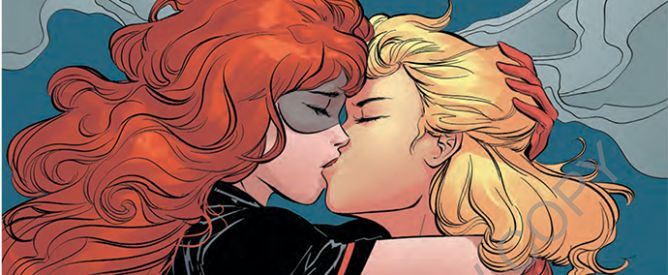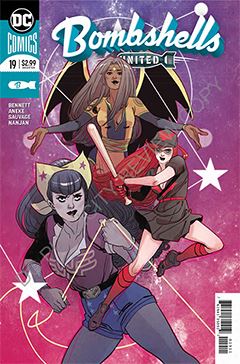- Comics
- Comics Reviews
- Manga
- Comics Reviews
- European Comics
- News
- Comics News
- Press Releases
- Columns
- Spotlight
- Digital Comics
- Webcomics
- Cult Favorite
- Back Issues
- Webcomics
- Movies
- Toys
- Store
- More
- About

By Philip Schweier
June 6, 2018 - 04:04
I
can’t tell you how happy I am this series has concluded. “But, Philip,” you
say, “If you hate it so much, why did you read it?” Because I made the commitment
to review it, which I was obligated to fulfill. And now that commitment is
over. Yay!

I found this
issue to have a “go for broke” attitude, which I can appreciate. With the
series ending, writer Marguerite Bennett pulled out all the stops and told the
story she wanted to tell, the way she wanted to tell it.
In fairness, I don’t believe Bombshells United’s shortcomings were entirely Bennett’s fault. DC Comics provided a novice comic book writer with an extremely limited concept, setting her up for failure. The premise of the series is DC female characters as 1940s-style Rosie the Riveter-type variations.
Bennett created a world in which the DC women are the heroes of the day, but was unable to turn a mildly interesting idea into a sustainable ongoing series. In fairness, I’m not sure anyone could have done so.
Bennett created a world in which the DC women are the heroes of the day, but in doing so, she handed readers what appears to be a lesbian agenda. I’m all for inclusiveness, but Bennett was so heavy-handed, it no doubt drove many readers away. In this issue alone, there were four panels depicting of same-sex romance. I’m not a prude, but I find that kind of lazy writing to encourage clichés and stereotyping.
Back in the 1930s, white screenwriters wrote uninformed dialogue for black characters. “Pass out dem watermelons and dem chicken legs to my friends.” By today’s standards, it’s incredibly racist. In the 1970s, middle-aged comic book writers wrote clunky dialogue for younger characters. “C’mon, dude. I’m not a square trying to hassle you, I’m just a cat looking to rap with you a while.” It’s ridiculous.
I have seen too many instances in which the shortcut for portraying LGBTQ characters in comics is to show them kissing. Some may consider it visual shorthand, convenient for the limited number of pages available. I believe a better strategy is to create a well-rounded character with depth, who just happens to be homosexual. Because sexuality is only one facet of a person’s character, live or fictional.
In fairness, 19 issues was not ample time for Bennett to create legitimate characters. But on the other hand, she VERY quickly populated the series with 1940s variations – perhaps too quickly for any given character to develop and mature. Some seemed redundant to me, such as Supergirl and Power Girl, Zatanna and Raven, and all the MANY Batgirls.
It is my hope the Bombshells concept will fade, becoming a moderately interesting piece of DC Comics history, like other Elseworld versions. Perhaps someday it will be revived by a more capable writer; perhaps Bennett herself, when she has more experience.
But don’t expect me to read it.
Rating: 0/10